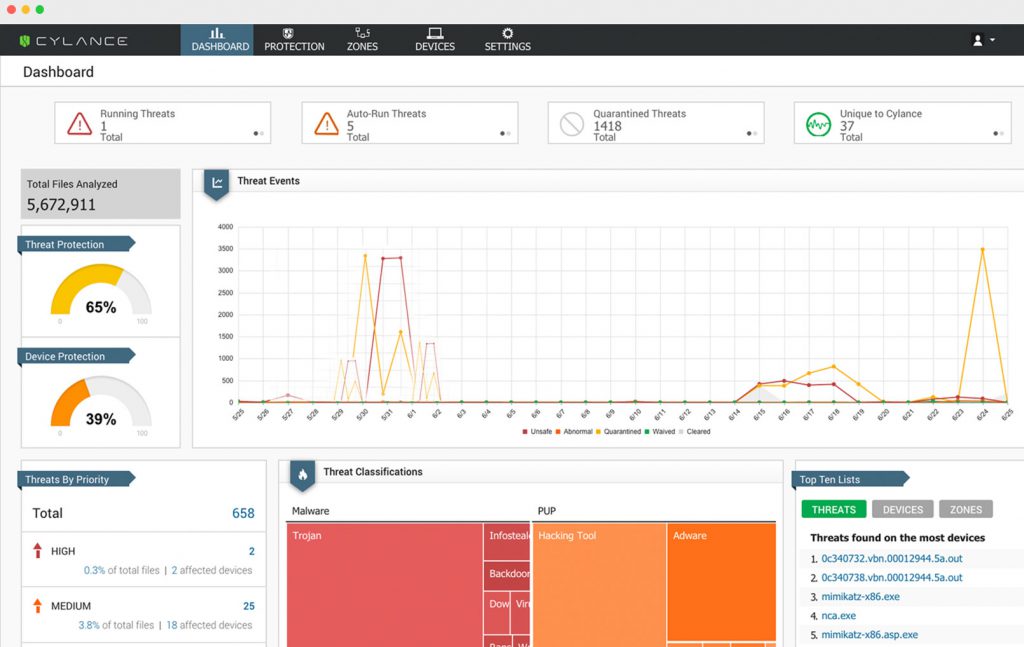
Have you ever thought that it would be possible to stop a cyber attack before it happens? A startup company, Cylance, not only believes it is possible but it also has started an AI project to show us how. Meet CylanceProtect, an ambitious project that aims to prevent cyber attacks.
Just yesterday, Cylance made an announcement that they successfully raised $100 million in Series D funding. CylanceProtect promises to accomplish AI-based endpoint security while employing just a chunk of the system resources needed by current security approaches.
How Is CylanceProtect Going to Prevent Cyber Attacks?
Advanced Threat Protection Relying on Artificial Intelligence
As pointed out by security researchers, current technologies (signatures, heuristics, etc.) use a reactionary approach while CylanceProtect uses artificial intelligence to analyze a file’s DNA and predict whether it’s malicious or not. Before it executes on the local host!
To do so, Cylance excerpts millions of unique characteristics from the code, analyzes them and compares them to trained statistical models. This is how the project predicts their purpose. However, the whole evaluation process takes less than 100 milliseconds, and this swiftness can stop malicious file execution.
What is more, CylanceProtect should protect various types of cyber attacks, including:
- Both system- and memory-based attacks
- Spear phishing campaigns
- Zero-day exploits and flaws
- Escalation of privileges
- Malicious programs
- Malicious scripts
The AI-based security solution should wipe out the need of AV protection and intrusion detection. More surprisingly, no Internet connection or updates will be needed.
This is how Cylance advertises their product:
Predict. Prevent. PROTECT.
Stop merely detecting attacks. Prevent them using CylancePROTECT®, the only enterprise endpoint solution that blocks threats in real time BEFORE they ever cause harm.
According to the company’s CEO Stuart McClure, CylanceProtect goal is to reinvent endpoint security by using machine learning to think like a cyber hacker. “We now must ensure that it is put in the hands of security leaders inside enterprises, organizations, governments, and small businesses as quickly as possible“, he concludes.


